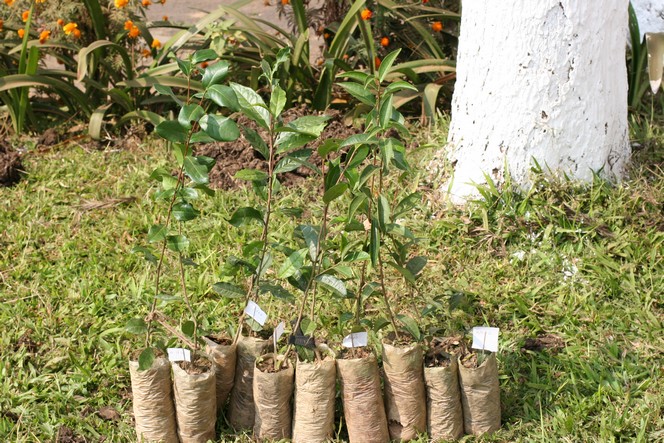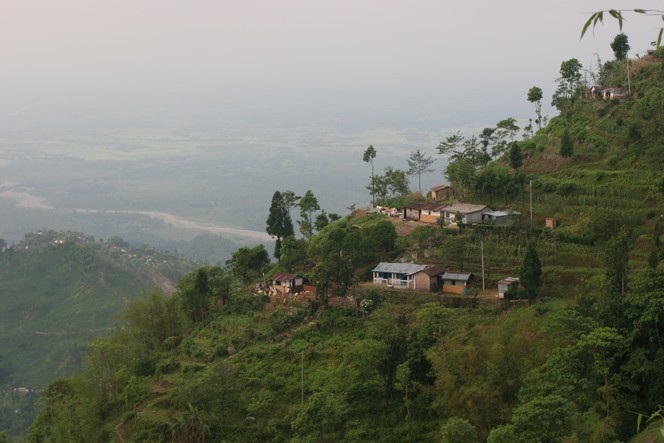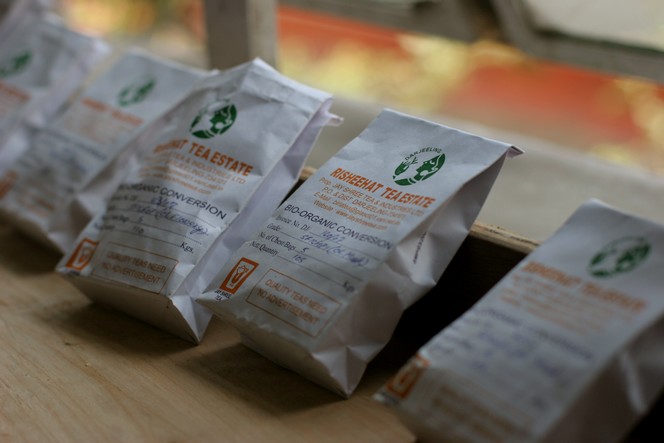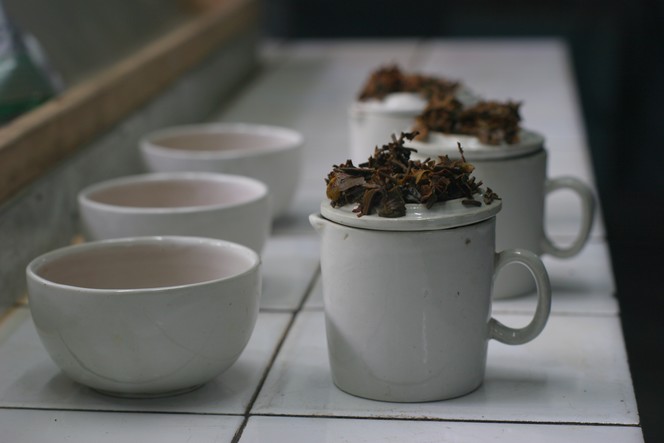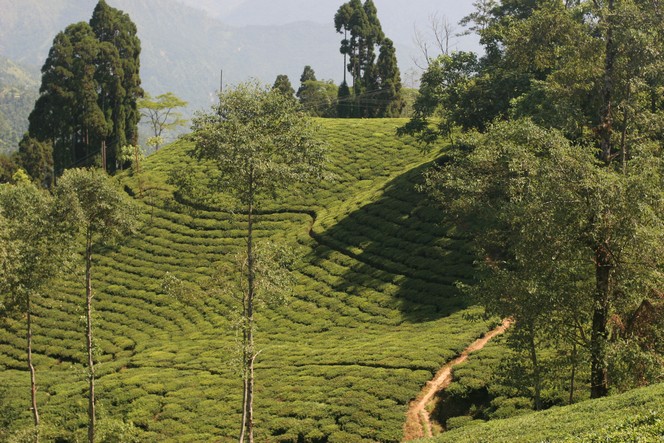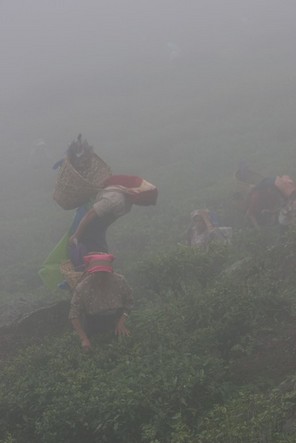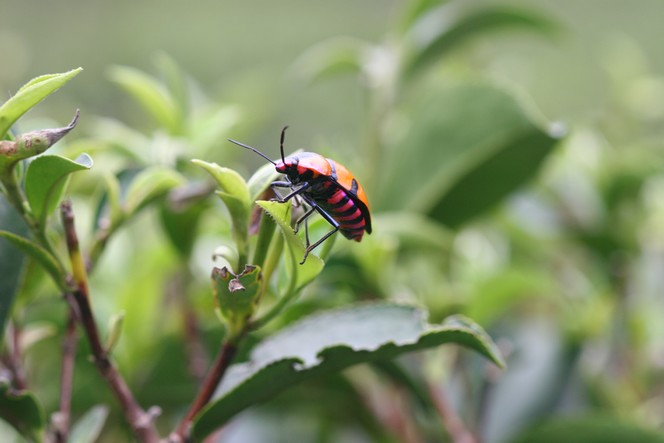This March I’ve tasted about 50 samples of tea a day. The first flush Darjeelings launch the season, followed swiftly by the Nepalese teas. A little later it’s the turn of the new-season China green teas. Then the Japanese Ichibancha. The teas are tasted blind, of course. The ritual is always the same: having smelt the infusion, you suck in the liquor and swish it around your mouth. You analyse the texture, the flavours, the aroma groups. You take your time. You taste and you taste again. You have to concentrate… Except for when a photographer bursts into the tasting room and captures the moment.
ARCHIVE FOR March 2012
The meaning of the word “clonal” on a label
In the same way that wine can be made using different grape varieties, tea comes from different plants, each with its own characteristics. In this photo you can see the main cultivars used in the Darjeeling region (India). When a particular lot of tea is made solely from these varieties, Indians call it “clonal”. The word “clonal” on a label does not mean the tea comes from a cloned plant, but simply that the leaves were harvested from very specific cultivars. Some of these cultivars have been developed by an agronomic research institute and are known for their excellent quality and flavour.
The first estates to harvest are at low altitudes
In Darjeeling, at the beginning of every spring, the first estates to harvest are those situated at the lowest altitudes. They enjoy more clement temperatures. This is what the region looks like at the exact place where the immense plains of India take over from the foothills of the Himalayas. Here, you can see the Longview Tea Estate, and you can make out the ochre-coloured stone bed of the Balasun river.
New samples of tea have just been delivered
For the past two days samples of tea have been delivered in large numbers at my tasting room. As soon as they arrive I taste the contents of the little bags on which are marked the name of the garden, the lot number, the grade and the quantity of tea produced.
This is it! In Darjeeling, the season is now properly underway.
Weather delays tea plucking in Darjeeling
Because of the cold and then the lack of rain, the tea plants are growing very slowly in Darjeeling. As of mid-March, only a few lots have been produced, and it will be a while before there’s a good selection available.
I have bought three lots so far though: a very small amount from Teesta Valley, which I’ve already talked about; the first plucking from Mission Hill, which develops a lovely length in the mouth, and lastly, the Hillton DJ1 with its aromas of cut grass and raw vegetables, which has an incredible intensity.
First flush Darjeelings: the good way to infuse them
If there’s a group of teas that is particularly sensitive to the infusion time, it’s the Darjeelings. Thirty seconds too long and your tea will be bitter due to excessive astringency. First flush Darjeelings must be infused correctly: the water should be around 85 degrees and the infusion time should be between 3’30 and 3’45 maximum. With Darjeelings, the flavour and aroma balance is very delicate, so to appreciate them fully, you’d be wise to heed this friendly advice.
While you’re waiting for your tea to infuse, you can follow my example and have fun taking a picture of the timer. This rather rustic one reigns in the tasting room on the Barnesbeg Tea Estate (India).
I’ve just bought the first tea of the year
I’ve just received the first samples of the Darjeeling spring teas, or “first flush”. The buds on the plants are very small, and the shoots are still a little slow due to the generally cool winter. The temperature is still too low to allow an abundant crop. Nonetheless, certain planters have produced some wonderful teas.
I’ve just bought the first tea of the year – a very small lot of just 15kg – from the Teesta Valley Tea Estate. This is a lovely plucking, with leaves just lightly rolled, giving a fresh infusion that is both vegetal and fruity, and a supple liquor with pronounced vegetal and almond notes. A pure delight.
To accompany your tea tasting, here is a view of the Teesta Valley Estate itself. It offers the same roundness and sweetness as well as the famous vegetal note… It’s as if the landscape itself was reflected in our cups.
To find good teas, one must be patient
I don’t need to teach you tea drinkers to be patient. You know how to take time choosing your tea, to prepare it in the right way, steeping the leaves in water that is not too hard or too hot, allowing the leaves to infuse for the right length of time.
In a few days we will be able to try the first samples of the spring teas. However, it’s not always the first that are the best, and sometimes – but not always – it’s better to wait for the next day’s harvest.
Here is a view of Darjeeling for you to contemplate while you wait to try these leaves being harvested at the moment, right here, on these misty hillsides.
The first harvest of the year is about to start
When I ask planters in Darjeeling when they will begin the first pluckings of the year, they always gives roughly the same reply: around the time of the Holi Festival. Holi takes place in India every year at the beginning of spring. It’s the festival of colours. To celebrate, everyone arms themselves with plenty of coloured pigments and throws them in the faces of people around them. Throughout the day, they cover their laughing friends – and anyone else they come across – in a riot of colours.
With its coat of bright pink and orange, this elegant creature climbing over a tea bud looks like it has been taking part in Holi. The tea harvest is surely about to start.


